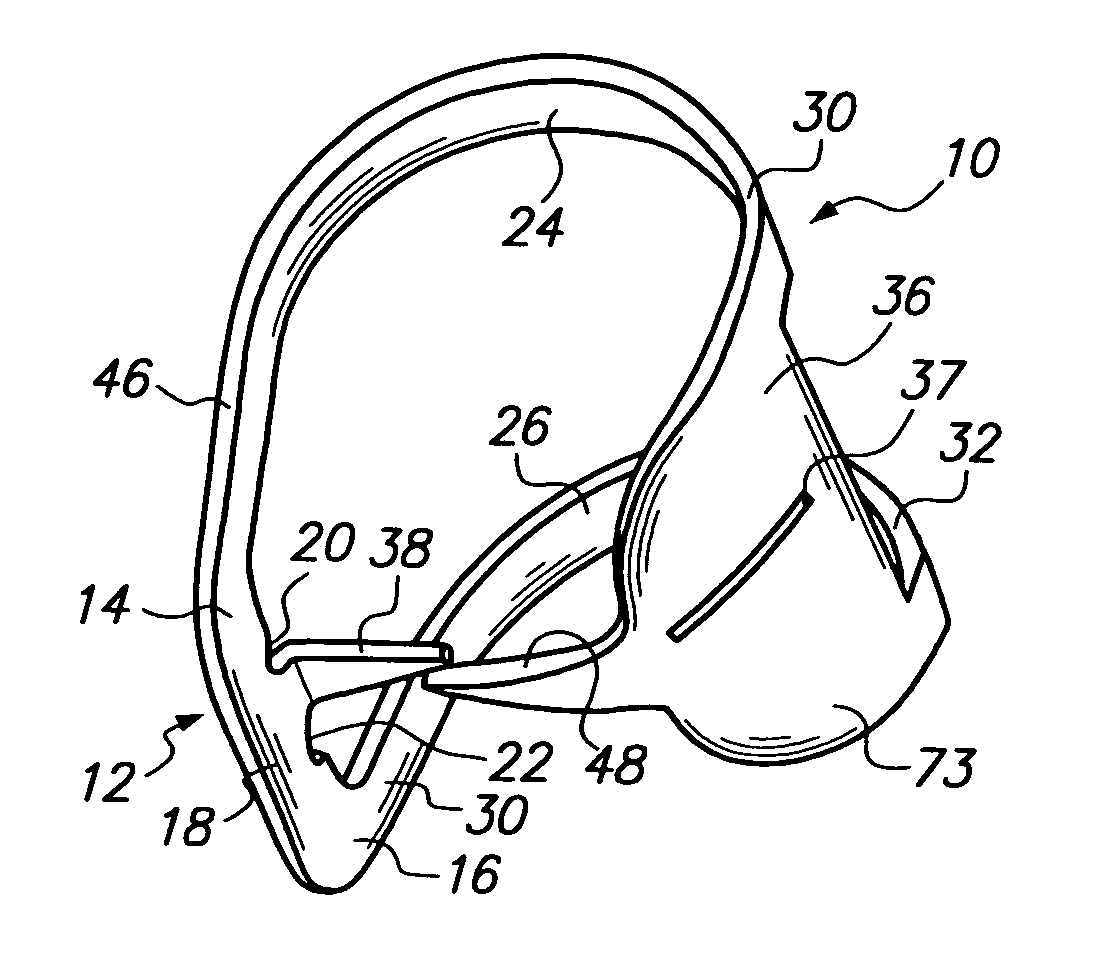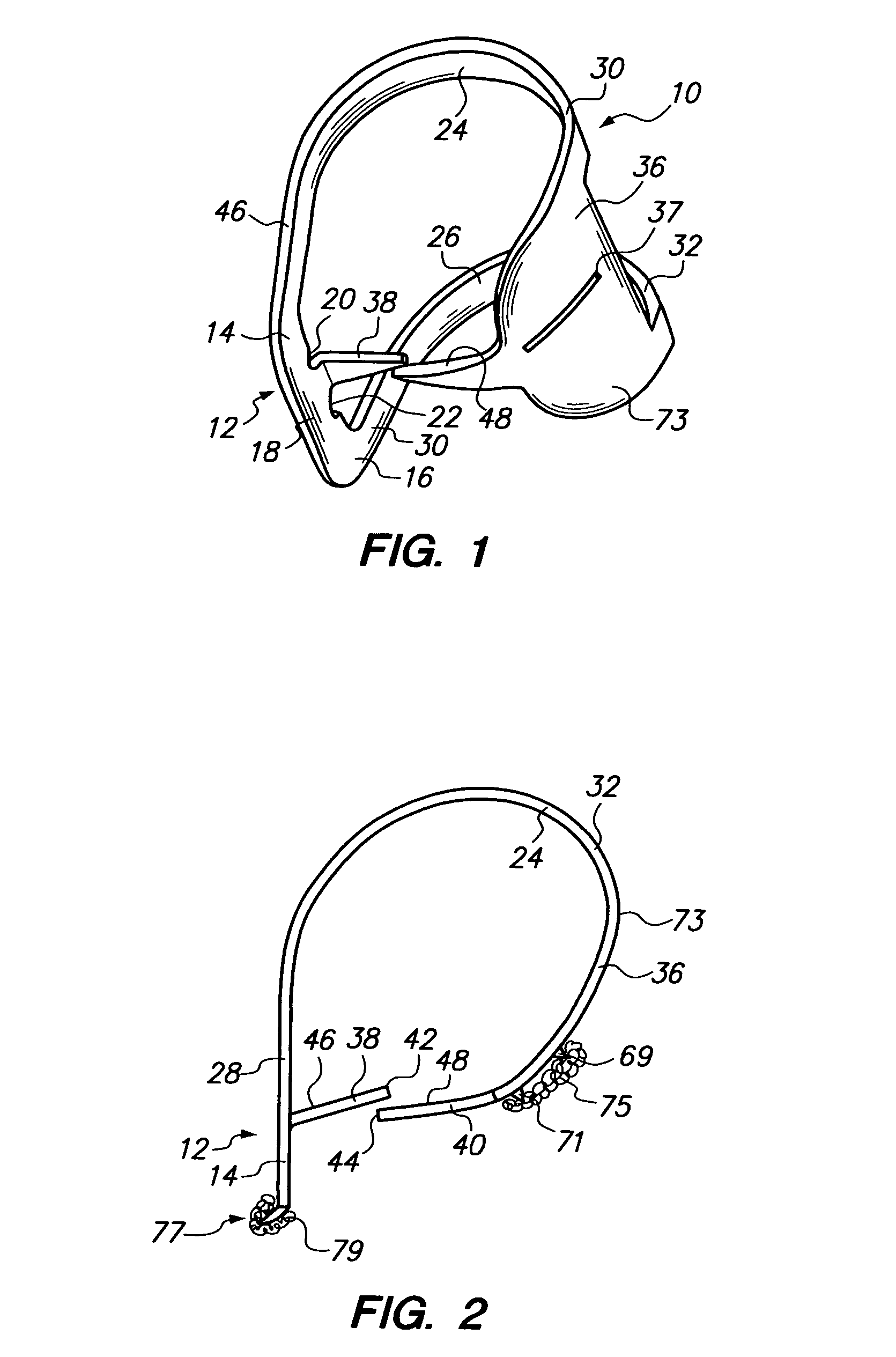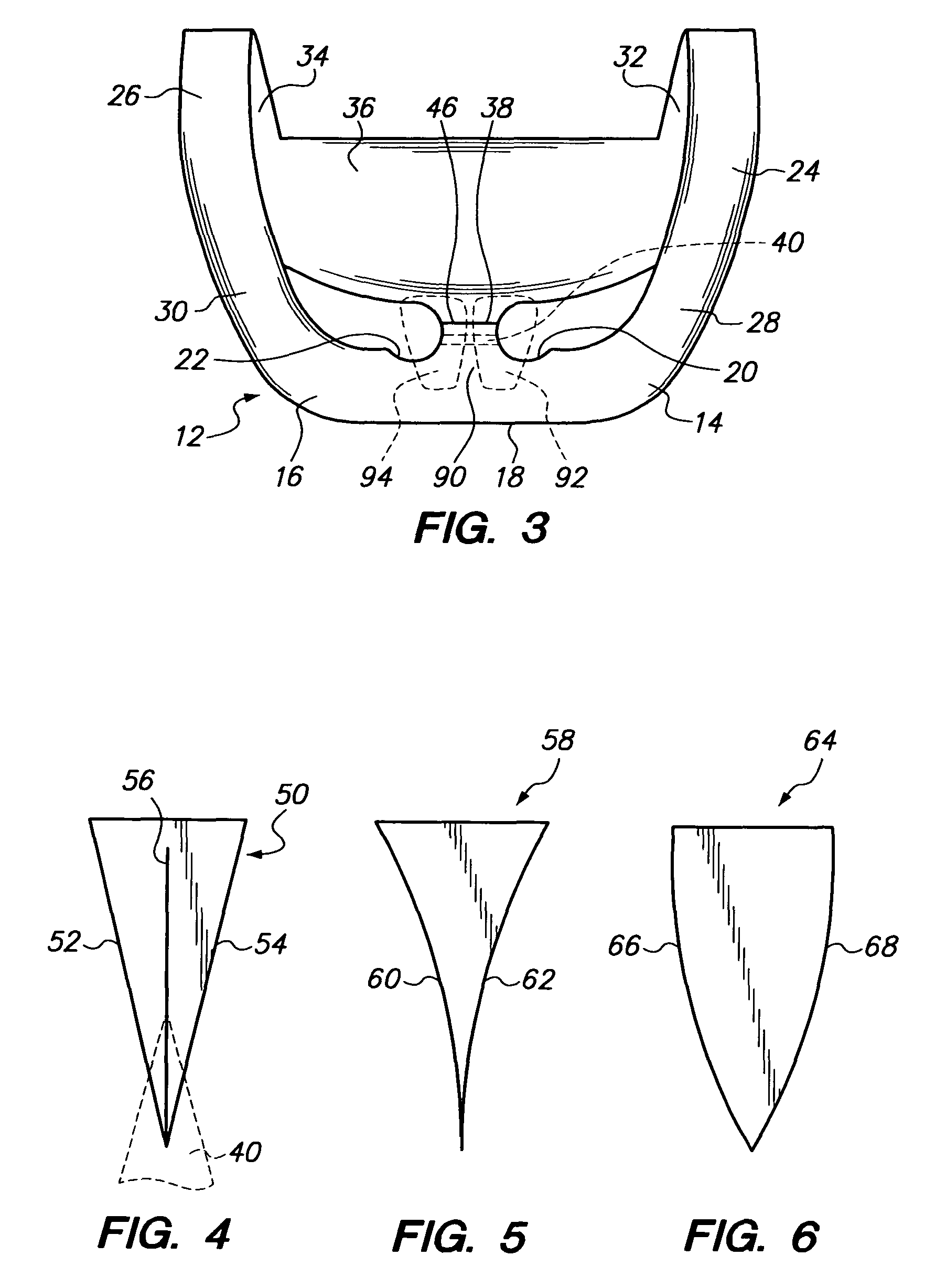Teeth separating apparatus
a technology of separating apparatus and stainless steel, which is applied in the field of teeth separating apparatus, can solve the problems of abrasive stainless strips having sharp edges, affecting the quality of teeth, and requiring great precision, and can not be easily manufactured and sterilized, etc., to achieve the effect of convenient use, durable and reliable use, and convenient us
- Summary
- Abstract
- Description
- Claims
- Application Information
AI Technical Summary
Benefits of technology
Problems solved by technology
Method used
Image
Examples
Embodiment Construction
[0038]Various aspects of the present invention will evolve from the following detailed description of the preferred embodiments thereof which should be referenced to the prior described drawings.
[0039]The tooth separating apparatus of the present invention is depicted in an embodiment 10 depicted in FIGS. 1-3 and 8. Apparatus 10 includes as one of its elements a base member 12. Base member 12 is formed with a first end portion 14, a second end portion 16, and an intermediate portion 18 interconnecting first and second end portions 14 and 16, respectively. Base member 12 also includes notches 20 and 22 which are used to support other dental devices such as a rubber dam forceps or pliers. Base member 12 as well as the remaining portions of apparatus 10, which will be described hereinafter, may be formed of any resilient material such as metal. In particular, 400 series stainless steel suffices in this regard.
[0040]First spring 24 and second spring 26 extend from first end portion 14 a...
PUM
 Login to View More
Login to View More Abstract
Description
Claims
Application Information
 Login to View More
Login to View More - R&D
- Intellectual Property
- Life Sciences
- Materials
- Tech Scout
- Unparalleled Data Quality
- Higher Quality Content
- 60% Fewer Hallucinations
Browse by: Latest US Patents, China's latest patents, Technical Efficacy Thesaurus, Application Domain, Technology Topic, Popular Technical Reports.
© 2025 PatSnap. All rights reserved.Legal|Privacy policy|Modern Slavery Act Transparency Statement|Sitemap|About US| Contact US: help@patsnap.com



